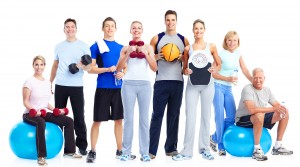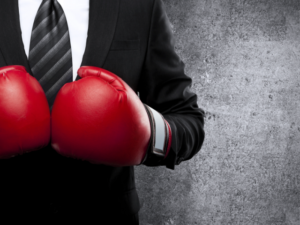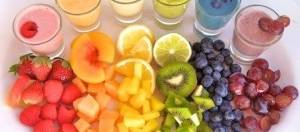 So think about this: For many years, the only way to track your workout performance and food intake was to manually look up information such as how many calories there are in a medium-size pomegranate and how many calories you burned chasing your freakishly quick Lhasa Apso down the street. Then you had to write everything in a log. The process was time-consuming and tedious, to say the least. But, there were always the strong at heart that would try diligently; until, of course, their mind would inevitably numb before their second set of squats and the logging would end.
So think about this: For many years, the only way to track your workout performance and food intake was to manually look up information such as how many calories there are in a medium-size pomegranate and how many calories you burned chasing your freakishly quick Lhasa Apso down the street. Then you had to write everything in a log. The process was time-consuming and tedious, to say the least. But, there were always the strong at heart that would try diligently; until, of course, their mind would inevitably numb before their second set of squats and the logging would end.
Today, things are different, even game-changing. Now, there are various gadgets for tracking our workouts, calorie intake, calorie expenditure, heart rate and so much more. These tools are simple to use and engaging. In fact, currently, one of the tougher parts of logging is deciding which gadget to use and for what purpose. Below are some insights and links that will make this easier for you.
Purpose of Tracking Your Food Intake and Fitness
The short end of it is this: When you track your exercise and food intake, then you’re better able to achieve your health and fitness goals. When you don’t do the tracking, well, you’re less likely to get the results you want.
 Bodybuilding states that keeping a training journal is the boost elite athletes have over Mr. Wannabe in the gym. Think about how elite athletes have to train to perform better than their competition. Their tracking of what they do is no less intentional and rigorous.
Bodybuilding states that keeping a training journal is the boost elite athletes have over Mr. Wannabe in the gym. Think about how elite athletes have to train to perform better than their competition. Their tracking of what they do is no less intentional and rigorous.
Lucky for you, you can do similar tracking ultra-simply and with “gamification” perks that can keep you entertained. Many of the latest gadgets now let you add friends and family and create groups. You can then compete with whom you choose to see who gets the most exercise done in a given period or stays true to a particular diet. It may not be the same thrill an Olympian gets from winning the Olympics, but it probably beats the usual humdrum competitions of trying to bump someone out of line for a buffet or stealthily dashing to the favored La-Z-Boy before a family member does. These gadget “gamification” components are not only an incredible way to keep your mind from going numb, but also to keep you in the game of fitness!
But we digress …
According to the Centers for Disease Control and Prevention(CDC)writing down every single bite that goes into your mouth and in your body gives you lots to consider. Below are some of the benefits of logging your food intake whether you use a journal, digital wristband, techie headgear, food-monitoring fork or Techno sport bottle.
Logging your food intake…
• helps you establish an ongoing log of your eating habits; thus it helps you reflect on what you have eaten, as well as when and where. Over a course of a week or a month, you can begin tracking habits and rituals hidden in your eating behaviors;
• reveals your emotions or thoughts during eating — albeit, you may be startled by what these actually look like when you are killing a large Chicago pizza or list end indulging in a triple-chocolate, dulce de leche cheesecake — yes, the whole thing, not slices;
• provides you an awareness of food transgressions, as if you weren’t somewhat aware of them already. These are harder to ignore, however, when you take the time to acknowledge them.
The benefits of an exercise log are similar. Every time you log your exercise progress, such as the number of miles jogged in a day, minutes spent spinning in class, or set and reps completed in a strength training session, you make your exercise routine official.
Here are some specifics to record with your daily fitness log:
• Exercises performed
• Sets, repetitions and weights used
• Length of the workout including your intensity
• Personal comments regarding the success of the workout (e.g., mood or muscle soreness)
• Where you worked out
• What time you worked out (i.e., Was this your normal time?)
 Spending thousands of dollars on a health gadget that simulates your blood pressure and heart rate on different planets with a gravity adjustment setting may seem perfectly reasonable to you. Make sure, though, you plant your feet on the ground first and remind yourself of what you are trying to accomplish. Technology is just a tool.
Spending thousands of dollars on a health gadget that simulates your blood pressure and heart rate on different planets with a gravity adjustment setting may seem perfectly reasonable to you. Make sure, though, you plant your feet on the ground first and remind yourself of what you are trying to accomplish. Technology is just a tool.
Choosing the right tool can
• make your tracking more engaging, thereby increasing your use of it;
• help you more accurately track what you are doing with your health and fitness;
• facilitate your communication with those who are supporting your fitness goals such as your doctors and trainers; and
• assist you in making better decisions on how to reach your personal health and fitness goals by providing you useful information and actionable insights.
Gadgets to Track Your Food Intake and Fitness
Gadgets to track your food intake
Using gadgets to track your food intake makes the process of documenting your food intake so fast and easy that you have zero excuses for not keeping a daily food log. In your quest to monitor your eating habits consider
• investing in the HAPIfork, a $70 investment that monitors every morsel that you eat;
•for the gym, purchasing a new beverage bottle called the Umoro One, which lets you shake things up without needing to carry your water or protein powder separately; or
• utilizing daily food logs, such as this one from the National Heart, Lung and Blood Institute that can be printed or used digitally.
There are also apps such as MyFitnessPal, Lose it! or Fitness Buddy that you may like. These apps can help you record
• foods you eat including meals, snacks and beverages;
• times you eat, especially those times that are out of sync with meal times;
• calorie and fat counts for the foods you consume;
• your vitamin and mineral intakes; and
• more.
Seriously, how can you not be amped by how easy technology makes all this?
Gadgets to track your fitness
The following fitness gadgets will help you in your personal battle of the bulge; or if you have won that battle and you are looking to conquer new territories, these gadgets can assist you in reaching your ideal body composition:
• Fitbit
• Amiigo Fitness Bracelet
• Jawbone Up
• Spree Headband
• Nike+ Runner
• Apple Watch
If you want to go old school to record the food you’ve eaten and the calories you’ve burned because pushing a pencil is part of your workout
to burn calories, you might prefer this printable workout log.
Whatever method you choose, logging and reviewing your health and fitness routines will allow you to be more purposeful and effective in reaching your health and fitness goals; and it will empower you to live a healthier and fitter lifestyle.











 If you are trying to lose weight or get back into shape, you’ve probably heard a lot of talk about proteins. The fact is, proteins are an essential part of any diet and knowing more about them will help any weight loss, muscle building, or recovery effort.
If you are trying to lose weight or get back into shape, you’ve probably heard a lot of talk about proteins. The fact is, proteins are an essential part of any diet and knowing more about them will help any weight loss, muscle building, or recovery effort. The typical
The typical


 There’s no escaping this simple truth: Breakfast is the most important meal of the day. Breaking the fast after you sleep is an actual thing that you need to do. The
There’s no escaping this simple truth: Breakfast is the most important meal of the day. Breaking the fast after you sleep is an actual thing that you need to do. The  If you’re an egg lover, check out these
If you’re an egg lover, check out these 
 All fats are not created equal, which is why we hate to see them all swept into the corner, labeled “bad” and dismissed faster than it took Game of Thrones’ Catelyn Stark to shun her husband’s bastard son, Jon Snow. Let’s play nice and take a closer look.
All fats are not created equal, which is why we hate to see them all swept into the corner, labeled “bad” and dismissed faster than it took Game of Thrones’ Catelyn Stark to shun her husband’s bastard son, Jon Snow. Let’s play nice and take a closer look. Commonly referred to as solid fats because they’re solid at room temperature, these frightening fats can wage war on your heart by infiltrating your bloodstream and clogging up your arteries.
Commonly referred to as solid fats because they’re solid at room temperature, these frightening fats can wage war on your heart by infiltrating your bloodstream and clogging up your arteries. According to
According to 
 So think about this: For many years, the only way to track your workout performance and food intake was to manually look up information such as how many calories there are in a medium-size pomegranate and how many calories you burned chasing your freakishly quick Lhasa Apso down the street. Then you had to write everything in a log. The process was time-consuming and tedious, to say the least. But, there were always the strong at heart that would try diligently; until, of course, their mind would inevitably numb before their second set of squats and the logging would end.
So think about this: For many years, the only way to track your workout performance and food intake was to manually look up information such as how many calories there are in a medium-size pomegranate and how many calories you burned chasing your freakishly quick Lhasa Apso down the street. Then you had to write everything in a log. The process was time-consuming and tedious, to say the least. But, there were always the strong at heart that would try diligently; until, of course, their mind would inevitably numb before their second set of squats and the logging would end. Bodybuilding states that keeping a training journal is the boost elite athletes have over Mr. Wannabe in the gym. Think about how elite athletes have to train to perform better than their competition. Their tracking of what they do is no less intentional and rigorous.
Bodybuilding states that keeping a training journal is the boost elite athletes have over Mr. Wannabe in the gym. Think about how elite athletes have to train to perform better than their competition. Their tracking of what they do is no less intentional and rigorous. Spending thousands of dollars on a health gadget that simulates your blood pressure and heart rate on different planets with a gravity adjustment setting may seem perfectly reasonable to you. Make sure, though, you plant your feet on the ground first and remind yourself of what you are trying to accomplish. Technology is just a tool.
Spending thousands of dollars on a health gadget that simulates your blood pressure and heart rate on different planets with a gravity adjustment setting may seem perfectly reasonable to you. Make sure, though, you plant your feet on the ground first and remind yourself of what you are trying to accomplish. Technology is just a tool.
 The problem is that this formula is much, much, much easier to read than implement. Thanks to food cravings, as noted by
The problem is that this formula is much, much, much easier to read than implement. Thanks to food cravings, as noted by  YES! Contact me today to schedule a FREE no obligation consultation and trial workout.
YES! Contact me today to schedule a FREE no obligation consultation and trial workout.